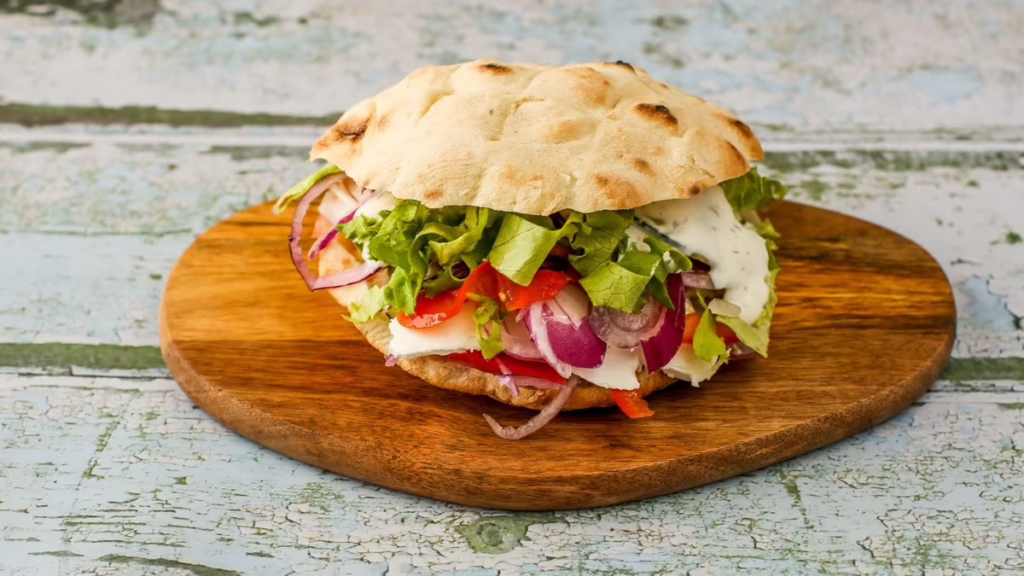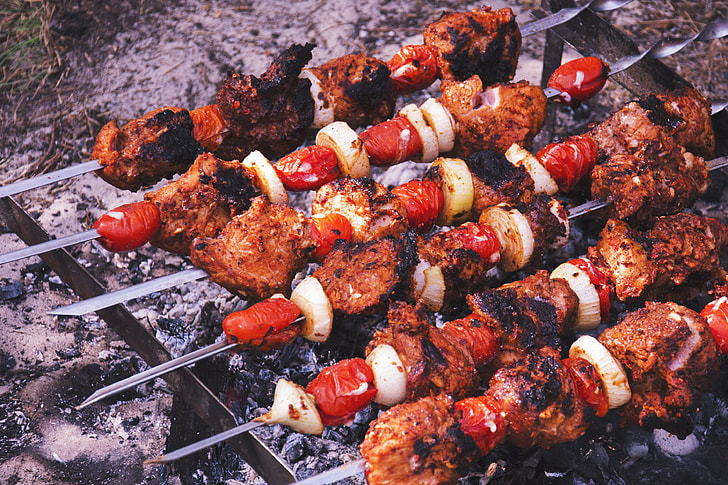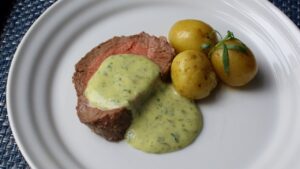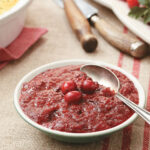Kebabs, with its enticing flavor, has captivated the hearts and taste buds of people worldwide. This culinary adventure takes us on a journey of discovery, tracing the roots of kebabs, exploring the art of making homemade kebabs, tasting regional variations, and venturing into the world of vegetarian and vegan kebabs.
The Origin of Kebabs: A Culinary Journey Through Time and Space
To truly appreciate the magic of kebabs, we must travel back in time to trace their origins to ancient Persia.
Kebabs in Ancient Persia
The story of kebabs dates back to around 1000 AD in ancient Persia, a region known for its rich culinary traditions. Kebabs were born as a humble dish, born out of necessity rather than luxury. The ingenious idea was to skewer small pieces of meat on sticks and then cook them over an open flame. This resulted in tender, juicy, smoky-flavored food—a simple yet effective cooking method that laid the foundation for centuries of culinary exploration.
The name “kebabs” comes from the Persian word “kabāb,” which means “frying” or “burning.” This name aptly reflects the essence of kebab making, where meat is exposed directly to the heat of the fire, creating irresistible charred edges and mouthwatering aroma.
From Ancient Persia to the World
As kebabs-making techniques evolved, their popularity continued to rise, sparking the imagination of chefs and food enthusiasts and spreading to the Middle East and other regions. Its journey was facilitated by trade routes, including the famous Silk Road, gradually making kebabs popular worldwide.
As kebabs traveled through various regions, they continually adapted and transformed to suit local tastes and available ingredients. Each culture infused its unique flavors and techniques into this versatile dish.
One significant milestone in the global journey of kebabs was their arrival in Europe. Kebabs, in the form of vertically roasted meat, were introduced to Germany in the 1960s and quickly gained popularity. The idea of cooking thin slices of meat on vertical spits served with bread and fresh vegetables and sauces, resonated with European palates. Soon, kebab shops started appearing on street corners, sparking a thriving fast-food revolution.
Today, from the bustling streets of Istanbul to the lively food markets of Mumbai, the sizzle and aroma of lamb kebabs grilling over an open flame remain consistent. The convenience and pure deliciousness of kebabs have made them an integral part of global street food culture.
The Art of Making Homemade Kebabs
Making homemade kebabs is a culinary adventure that invites you to roll up your sleeves, gather ingredients, and embark on a delicious journey. While enjoying kebabs at local restaurants is undoubtedly delightful, there’s no denying that crafting your version of this iconic dish at home is something special. Let’s delve deeper into the art of making homemade kebabs, from choosing the right ingredients to perfecting grilling techniques.
Key Points for Making Perfect Kebabs
The core of any delicious kebabs lies in the selection of high-quality ingredients. When considering making kebabs at home, you need to make some choices. Firstly, the choice of meat is crucial. While lamb and beef are traditional favorites, chicken, seafood, or even pork can be used to create unique and delicious kebabs. Vegetarians and vegans have many options, including tofu, cheese, or a mixture of fresh vegetables.
The vegetables you choose for your kebabs are as important as the meat. Bell peppers, onions, cherry tomatoes, zucchini, and mushrooms are all excellent choices that add color and flavor. Proper skewering of the ingredients is essential for even cooking, so make sure to cut the vegetables and meat into evenly sized pieces.
Marination: Secret to successful kebabs
The secret to successful kebabs often lies in marination. A well-crafted marinade can transform ordinary meat into a symphony of flavors. The key to successful marination is achieving a harmonious balance of acidity, sweetness, saltiness, and spices.
Common ingredients in marinades include olive oil, garlic, lemon juice, and yogurt, as well as a blend of spices such as cumin, paprika, coriander, and chili. This combination imparts complexity and depth to the meat’s flavor. For the best results, marinate the meat for at least a few hours, preferably overnight. Extended marinating time allows the flavors to penetrate the meat fully, making the kebabs even more tender and flavorful.
Here are five delicious marinade recipes for various types of meat:
Classic Garlic and Herb Marinade (for Chicken or Steak)
1/4 cup olive oil
3 cloves garlic, minced
2 tablespoons fresh parsley, chopped
1 tablespoon fresh rosemary, chopped
1 tablespoon fresh thyme, chopped
1 teaspoon salt
1/2 teaspoon black pepper
Zest and juice of 1 lemon
Teriyaki Marinade (for Salmon or Tofu)
1/2 cup soy sauce
1/4 cup water
2 tablespoons honey
2 cloves garlic, minced
1 tablespoon fresh ginger, grated
2 tablespoons rice vinegar
1 teaspoon sesame oil
Citrus and Herb Marinade (for Shrimp or Chicken)
Juice of 2 lemons
Juice of 2 limes
2 cloves garlic, minced
1/4 cup fresh cilantro, chopped
1/4 cup fresh mint, chopped
1 teaspoon cumin
Salt and pepper to taste
Italian-Inspired Balsamic Marinade (for Pork Tenderloin or Portobello Mushrooms)
1/4 cup balsamic vinegar
2 tablespoons olive oil
2 cloves garlic, minced
1 teaspoon dried oregano
1 teaspoon dried basil
Salt and pepper to taste
Caribbean Jerk Marinade (for Chicken or Tofu)
1/4 cup orange juice
2 tablespoons lime juice
2 tablespoons soy sauce
2 tablespoons brown sugar
1 tablespoon olive oil
2 cloves garlic, minced
1 tablespoon fresh thyme leaves
1 teaspoon ground allspice
1/2 teaspoon cayenne pepper
1/2 teaspoon ground cinnamon
1/2 teaspoon ground nutmeg

Mastering Skewering and Grilling Kebabs
Once you’ve gathered the ingredients and marinated the meat, it’s time to master the art of skewering and grilling. Proper skewering ensures even cooking and prevents ingredients from slipping or falling into the grill’s depths. Metal kebabs are a durable choice, but if using wooden kebabs, soak them in water for at least 30 minutes to prevent them from burning.
When it comes to grilling, there are various methods to choose from. Traditionalists may prefer open charcoal grills for that distinct smoky flavor. Electric grills offer convenience and precise temperature control, while oven broiling or stovetop griddle pans serve as indoor alternatives.
Cooking times vary depending on the type of kebabs and the method you choose. For example, chicken kebabs may take about 12-15 minutes, while beef kebabs might require a bit more time. Experimentation and practice will help you perfect the timing to achieve your desired level of doneness.
Delicious Side Dishes to Complement Your Kebabs
A grilled meat feast is incomplete without carefully selected side dishes. These accompaniments enhance the overall experience and create delightful contrasts with the delicious kebabs. Traditional sides include:
Pita Bread: Soft, warm pita bread is the perfect vessel for wrapping your kebabs.
Hummus: Creamy and garlicky, hummus is a classic dip that pairs perfectly with kebabs.
Tzatziki: Yogurt cucumber sauce is a refreshing yogurt-based sauce with cucumbers and herbs that provides a sharp contrast to the smoky flavor of kebabs.
Tabbouleh Salad: Tabbouleh is a fresh parsley and bulgur wheat salad, garnished with tomatoes and lemon sauce, adding brightness and texture to your meal.
Pickles: Various pickled vegetables such as cucumbers, radishes, and even olives offer rich flavors that complement the hearty texture of kebabs.
These sides not only enhance the flavors but also contribute to a well-rounded and satisfying kebabs experience. As you master the art of making homemade kebabs, don’t forget to explore different side dish options to find your perfect combination.
Regional Variations of Kebabs: Exploring Diverse Flavors from Around the World
One of the most fascinating aspects as we delve into the world of kebabs is the incredible diversity in regional variations. Each culture infuses its unique flavors, ingredients, and cooking techniques into this beloved dish, resulting in a rich tapestry of kebabs experiences. Join us on a journey to explore some of the most iconic regional kebab variants and their unique stories.
Turkish Delight: The Birthplace of Kebabs
When people think of kebabs, it’s impossible not to conjure the image of the döner kebabs, a culinary hallmark of Turkey’s contributions to the world. Döner kebabs, meaning “rotating grilled meat,” showcases the creativity and ingenuity of Turkish chefs.
At the core of kebabs is the vertical rotisserie, where marinated meat (typically beef or lamb) is stacked in layers and slowly cooked. The succulent meat is then thinly sliced and served in large flatbreads with fresh vegetables and various sauces. The juicy meat combines with yogurt cucumber sauce or tahini sauce, creating an astonishing sensory explosion.
Legend of the Kebabs: A popular legend attributes the invention of kebabs to a chef named Haci Iskender in 19th-century Istanbul, who is said to have perfected the art of vertical rotisserie cooking.

Persian Flavors: Chelow Kebabs
Chelow kebabs is a beloved Persian dish featuring kebabs with a unique aroma and flavor. The hallmark of this dish is the marinated and skewered meat, typically served with saffron-infused rice known as ‘chelow.’
The kebabs marinade includes ingredients like saffron, lemon juice, yogurt, and a variety of spices. Saffron is one of the world’s most expensive spices and a precious ingredient in Persian cuisine. It is the key to the rich and exotic flavor of chelow kebabs, adding vibrant color and delicate floral notes to the meal. Whether it’s lamb, beef, or chicken, the grilled meat carries an enticing smoky flavor. Kebabs are often served with grilled tomatoes and fresh herbs, enhancing the overall experience.
Indian Spice: Tandoori Kebabs
In India, thanks to the world-famous tandoor (clay oven), kebabs take on vibrant and spicy profiles. Tandoori kebabs are known for their bold flavors and bright colors, with meat marinated in yogurt and an array of aromatic spices, including cumin, coriander, turmeric, and garam masala.
The scorching temperatures of the clay oven can reach up to 900°F (480°C), imparting the distinct char and smoky flavor unique to tandoori kebabs while keeping the meat tender and juicy. Popular variations include chicken tikka and seekh kebabs. These tandoori delights are typically served with naan bread or accompanied by cooling yogurt raita and fresh lemon juice.
Greek Tradition: Souvlaki and Gyros
In Greece, two types of skewered and grilled dishes have captured the hearts of food enthusiasts worldwide: souvlaki and gyros. These Greek delicacies showcase the Mediterranean region’s love for fresh ingredients and bold flavors.
Souvlaki: Souvlaki consists of small marinated meat pieces, typically pork or chicken, skewered and grilled to perfection. They are often wrapped in pita bread or served as part of a platter with various accompaniments like tomatoes, onions, and copious amounts of yogurt cucumber sauce. Every bite of souvlaki is filled with Mediterranean flavors.
Gyros: Gyros is another Greek favorite, featuring seasoned meat slices cooked on a vertical rotisserie, typically pork or chicken. The meat is then thinly sliced and placed in pita bread along with tomatoes, onions, and creamy yogurt-cucumber sauce. The name “gyros” itself means “turn” in Greek, paying homage to the iconic vertical rotisserie.
The combination of skewered meats, gyros, and yogurt cucumber sauce has become a symbol of Greek cuisine, showcasing the harmony of flavors in Mediterranean cooking.
Beyond Meat: Vegetarian and Vegan Options
While skewered meats have a long history of being juicy, the culinary world’s increasing focus on plant-based diets and sustainability has led to exciting vegetarian and vegan alternatives. These meatless kebabs go beyond traditional meat products, catering to an increasingly diverse audience.
Vegetarian Kebabs
Vegetarian kebabs burst with a dazzling array of colorful vegetables, including bell peppers, zucchini, mushrooms, cherry tomatoes, and onions. The mix of vegetables ensures a variety of textures, from the crispness of bell peppers to the earthy taste of mushrooms. When skewered and grilled, these ingredients interact to create delightful flavors and textures.
Vegetarian kebabs are marinated with a mixture of olive oil, herbs, spices, and citrus, achieving a harmonious flavor blend. Common herbs and spices include oregano, thyme, rosemary, paprika, and a touch of lemon juice or vinegar for added zest.
The Plant-Based Revolution: Innovative Vegan Kebabs
The popularity of veganism has spurred innovative vegan skewer options that replicate the texture and flavor of traditional meat kebabs without using animal products, catering to vegans and those looking to reduce their meat consumption.
Seitan Kebabs: Seitan, often referred to as “wheat meat” or “wheat gluten,” is an excellent base for vegan kebabs. Its dense, chewy texture closely resembles meat, making it a popular choice. Seitan kebabs can be seasoned with a variety of spices, herbs, and sauces to mimic the flavors of traditional kebabs.
Tofu and Tempeh Creations: Tofu and tempeh, both made from soybeans, are versatile ingredients that can be marinated, grilled, and skewered to create satisfying vegan kebabs. Tofu’s ability to absorb flavors and tempeh’s nutty taste makes them excellent choices for those seeking plant-based alternatives.
Delicious Jackfruit: Jackfruit, a tropical fruit known for its meaty texture when cooked, is used to make flavorful vegan kebabs. Seasoned and grilled jackfruit kebabs closely emulate the texture of traditional meat kebabs, making them a popular choice among vegans.
Vegan kebabs, like their traditional counterparts, are often served with vegan pita bread, hummus, tahini, or dairy-free yogurt-cucumber sauce as traditional accompaniments.
Nutritional Value of Kebabs
Kebabs are a rich source of protein. Protein is a vital nutrient that plays a core role in tissue building and repair, supporting immune function, and maintaining healthy skin and hair. Kebabs, especially those made with chicken, beef, lamb, or seafood, provide a source of protein. Protein not only aids in tissue repair but also contributes to satiety, making kebabs a satisfying dietary choice.
While traditional kebabs use red meats like lamb and beef, you can opt for leaner cuts of meat to reduce saturated fat content. Chicken and turkey kebabs offer lower fat content and may be a healthier choice when seeking lean meat protein sources. Seafood kebabs made with salmon, shrimp, or tuna provide omega-3 fatty acids beneficial for heart health and brain function. For vegetarians and strict vegans, tofu or tempeh kebabs offer plant-based protein sources.
Grilling Preserves Nutrients
The grilling methods used in preparing kebabs offer unique advantages in preserving nutrients. Grilling typically involves quickly cooking food at high temperatures, which means that the food is exposed to direct high heat for a relatively short amount of time. In contrast, boiling may require more extended cooking times, leading to the breakdown or loss of certain vitamins and minerals at high temperatures.
Furthermore, grilling typically requires minimal liquid, while boiling involves cooking in water. Grilling helps to retain water-soluble vitamins in the ingredients, such as vitamin C and B vitamins.

Making Healthier Choices
To make kebabs healthier, consider the following tips:
Lean Meat Selection: Choose lean cuts of meat to reduce saturated fat content. Trim visible fat before marinating and grilling.
Whole Grains: Opt for whole wheat rolls or pita bread to increase fiber content.
Portion Control: Be mindful of portion sizes to avoid overeating.
Healthy Side Dishes: Pair your kebabs with nutritious sides like fresh salads, quinoa, or steamed vegetables to create a well-rounded meal.
Sauce Selection: Pay attention to sauce choices, as some sauces may have high calories and sodium content. Choose light dressings or yogurt-based sauces.
Conclusion
The enduring appeal of kebabs transcends time and borders. Its rich history, global variations, and adaptability make it a culinary tradition beloved by people of different tastes and backgrounds. Whether as street food or gourmet cuisine, kebabs consistently demonstrate the power of flavor in uniting cultures and bringing joy to the table.
Frequently Asked Questions
Q1: Are kebabs always made with meat?
A1: Not necessarily. Kebabs can be made with various ingredients, including meat, seafood, tofu, or vegetables. Vegetarian and vegan kebabs are popular choices.
Q2: How should meat for kebabs be marinated?
A2: The key to delicious kebabs is marinating the meat for several hours or overnight. Use a mixture of olive oil, spices, herbs, and acidic ingredients like lemon juice or yogurt to create a balanced marinade.
Q3: Can kebabs be made without a grill?
A3: Yes, you can make kebabs without a grill. You can bake them in the oven or use a stovetop griddle for a similar effect.
Q4: Are kebabs a healthy dietary choice?
A4: Kebabs can be a healthy choice, especially when made with lean meat and various vegetables. Grilling methods help preserve nutrients, making them a balanced dietary choice.
Q5: What are some creative skewer ideas to try at home?
A5: Get creative with kebabs by experimenting with different marinades and ingredients. Try fruit kebabs, seafood kebabs, or even marshmallow and chocolate dessert kebabs.
































